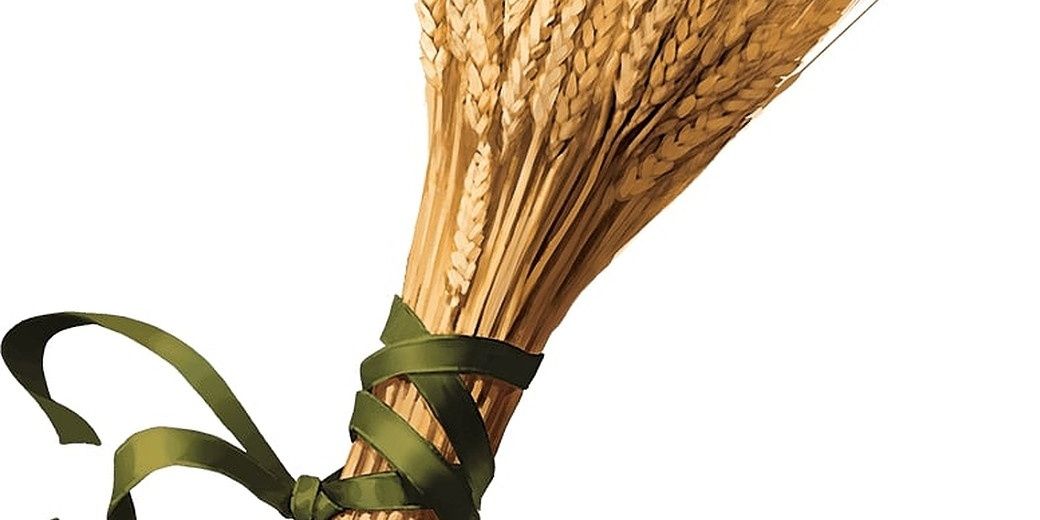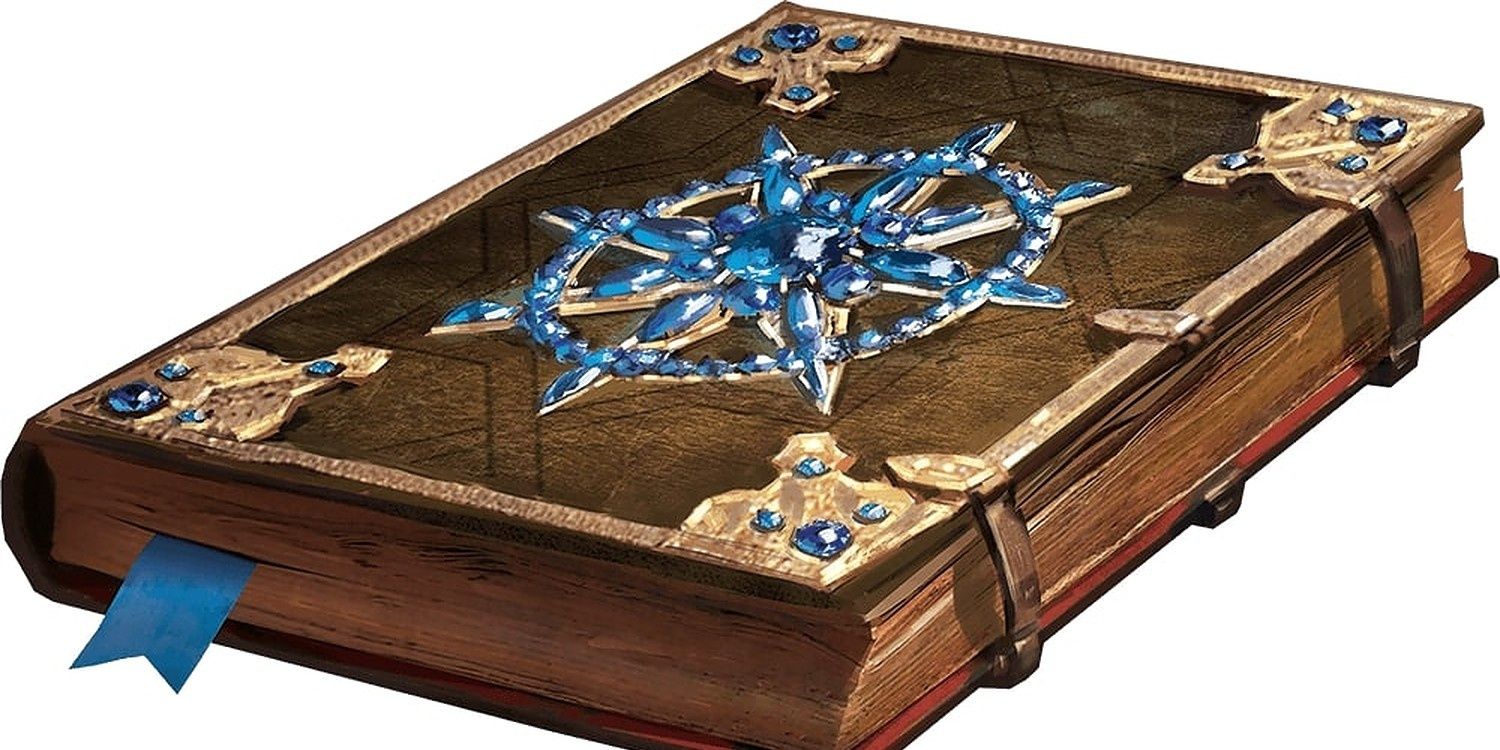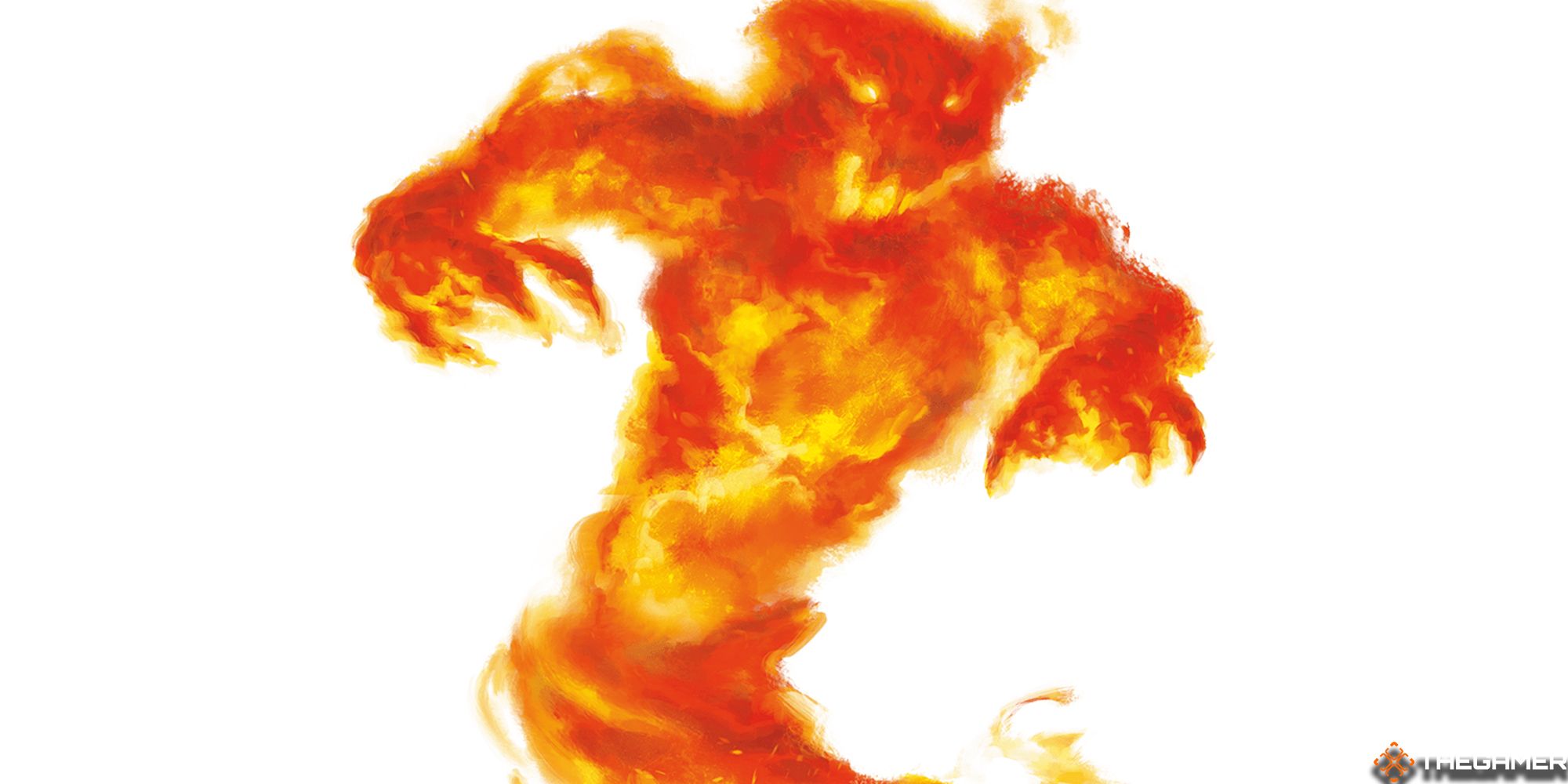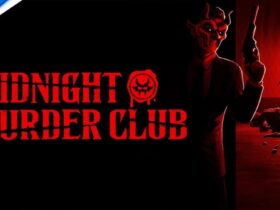Key Takeaways
- The power of gods in D&D is based on the number of worshippers, with a hierarchical structure from quasi-deities to over-deities.
- Some powerful beings in D&D like The Chained Oblivion and Shar are not easily classified within the hierarchy of gods due to their unique nature.
- Notable gods like Torm, Kelemvor, and Vecna have intriguing histories and play significant roles in the D&D pantheon, each with their unique traits and domains.
Gods dominate the worlds of Dungeons & Dragons. It’s nigh impossible to enter any civilized place without passing a church or temple. Holy men prostrate themselves before their gods in public, attempting to persuade others of their god’s greatness. And they do it for good reason too, as the power of a god is determined by the number of worshippers in their flock.

Related
Dungeons & Dragons: 8 Unusual Monstrosities To Shock Your Players With
Give your players a fright with these unusual monstrosities in D&D.
There are three different classes of gods in the various modules and planes that make up the D&D universe. Every priest of every god will tell anyone that the god they worship is the greatest, most benevolent, and most deserving of praise, but that isn’t quite true. It turns out that, even amongst the gods, there’s a hierarchal structure. It starts with quasi-deities or hero deities who are often honorary mortals, moves from them up to demigods, then to lesser and intermediate deities, greater deities, and finally to the most powerful beings: over-deities.
Updated on December, 2024 by Jon Eakin: Multiple different pantheons exist across the different official and partnered worlds of Dungeons & Dragons, ranging from the barely divine to the truly omnipotent. To help you keep up with the most powerful entities in D&D, we’ve updated this list with fresh features and new entries.
23 The Chained Oblivion
The Epoch Of Ends
- Alignment: None
- Sourcebook: Explorer’s Guide to Wildemount (2020)
- Symbol: A dark spiral contained by chains.
- Titles: Tharizdun, The Epoch of Ends
It isn’t absolutely clear that The Chained Oblivion, from Critical Role’s Exandrian setting, is actually a god or simply that no other category is enough to encompass it. Described as an endless, alien intelligence that desires only the end of all things, it cannot be reasoned with or understood.
The inscrutable nature of The Chained Oblivion makes determining its true power extremely difficult. It may be the inevitable end of all existence, or no more powerful than any other deity.
22 Shar
The Nightsinger
- Alignment: Neutral Evil
- Sourcebook: Sword Coast Adventurer’s Guide (Wizards of the Coast, 2015)
- Symbol: A black disk with a purple border.
- Titles: Mistress of the Night, Lady of Loss, Nightsinger, Dark Goddess, God of Thieves, Mistress of Pain
Best known as the Mistress of Night, Shar, along with her twin sister Selune, was created from the primordial essence of the crystal sphere that contains the entirety of the Forgotten Realm’s solar system. Shar and Selune split the forces of darkness and light between them, each taking domain over their chosen force.
In time, Selune’s power would wane as lesser gods fulfilled portions of her portfolio. Shar, on the other hand, remains as capable as ever.
21 Chauntea
The Grain Goddess
- Alignment: Neutral Good
- Sourcebook: Sword Coast Adventurer’s Guide (Wizards of the Coast, 2015)
- Symbol: Sheaf of grain, sometimes with a blooming rose.
- Titles: Earthmother, The Forest Mother, The Grain Goddess, Guardian of the Wilds and Deeps, Keeper of the Wild, Goddess of Bountiful Nature
Chauntea, also known as the Grain Goddess, is the god of growth. Along with Shar and Selune, she is one of the three most ancient gods. Chauntea is responsible for all life on the worlds of Abeir and Toril, as well as possible countless others.
The Forest Mother is generally worshipped by farmers, gardeners, and druids, but all who revere life in its myriad forms may claim to be her children. Chauntea is the manifestation of the earth itself. She loves nothing more than instructing the Earth’s denizens on how the land can enrich them.
20 Mystra
Our Lady Of Spells
- Alignment: Lawful Neutral
- Sourcebook: Sword Coast Adventurer’s Guide (Wizards of the Coast, 2015)
- Symbol: A blue and white star.
- Titles: The Lady of Mysteries, The Mother of All Magic, Our Lady of Spells, The Mother of Mystery, Goddess of Magic
Mystra is likely the most complicated of all the gods of the Forgotten Realms. It comes as no surprise that she is the Goddess of Magic, but Mystra was not always the goddess of magic. She took up the mantle when the original goddess, Mystryl, sacrificed herself to protect the weave which gives Order to all magic.

Related
Dungeons & Dragons: 8 Unusual Aberrations To Shock Your Players With
If you want to surprise your players, try using these weird Aberrations in your D&D campaign.
Mystra is more lawful than her predecessor, and in her reordering of magical law, she outlawed the use of all spells above ninth level, introduced limited access to magic (spell slots), and made spellcasting harder to perform in every way. Cyric actually managed to kill Mystra. She has since been replaced by the powerful wizard Midnight who took the name Mystra upon ascension to godhood.
19 Tyr
The Evenhanded
- Alignment: Lawful Good
- Sourcebook: Forgotten Realms Campaign Set (Cyclopedia of the Realms, 1987)
- Symbol: An image of balanced scales with a sword or war hammer.
- Titles: God of Justice, Grimjaws, The Maimed God, The Evenhanded, God of Justice, Wounded Tyr, The One-Handed, Blind One, The Eyeless One
Tyr is the Lawful Good god of justice and law. He is perhaps best known as the Maimed God, and for good reason. His right hand is missing and ends in a stump, and he wears bloody bandages over his eyes, which were gouged out by Ao after Tyr’s failure to protect the Tablets of Fate.
Those who are outside of Tyr’s church regard the god as overly stern and obsessed with justice. He also metes out rigid punishments. However, Tyr really just wishes to make the world a better place by whatever Lawful Good means necessary.
18 Deep Sashelas
The Dolphin Prince
- Alignment: Chaotic Good
- Sourcebook: Demihuman Deities (Wizards of the Coast, 1998)
- Symbol: A blue dolphin and waves.
- Titles: Lord of the Undersea, The Dolphin Prince, The Knowledgeable One, The Sailor’s Friend, The Creator
The Elf god of the sea, this understated and benevolent god is mostly unknown outside of the insular culture of the Sea Elves. According to their history, Deep Sashelas was their creator and continues to be their patron throughout the ages. He also holds a vast amount of knowledge regarding nature magic, which is why spellcasters and scholars interested in this discipline often seek him and the Sea Elves.
Deep Sashelas is peaceful but not neutral. He often opposes evil gods and other troublesome entities like Gorgons. However, he tends to tolerate or even associate with other deities that share his affinity for magic regardless of their alignment.
17 Silvanus
The Forest Father
- Alignment: Neutral
- Sourcebook: Sword Coast Adventurer’s Guide (Wizards of the Coast, 2015)
- Symbol: An oak leaf
- Titles: Oak Father, The Old Oak, The Forest Father, Treefather, God of Wild Nature
Where Chauntea is the mother of all things, Silvanus is the father. In a way, they are two sides of the same coin of life. While Chauntea is bountiful with her love for nature and all who want to understand it, Silvanus is more wrathful.
He does not have patience for those who would speak of nature poorly. He also sometimes struggles with balancing the importance of nature among other things. Accordingly, those who value nature greatly, such as the elves, often worship the Forest Father.
16 Kossuth
The Firelord
- Alignment: Neutral
- Sourcebook: Faiths and Pantheons (Wizards of the Coast, 2002)
- Symbol: A single tongue of flame.
- Titles: The Firelord, Lord of Flames, The Tyrant-King, Tyrant Among Fire
Kossuth rules over all things fire, thus, he is aptly called the Firelord. Much like the flames over which he rules, Kossuth has little affection for anyone or anything, including his followers. However, this does not prevent him from rewarding those followers frequently.

Related
Dungeons & Dragons: 9 Unusual Dragons To Shock Your Players With
Because there are a lot weirder choices out there than “red.”
Worship of Kossuth is incredibly hierarchical with worshippers organizing themselves through exhibitions of self-denial and regimented living. At the highest ranks, self-immolation is regarded as the ultimate display of fire’s purifying spirit. In the modern Forgotten Realms setting, Kossuth is regarded by some as a primordial rather than a god.
15 Lathander
The Morninglord
- Alignment: Neutral Good
- Sourcebook: Forgotten Realms Campaign Set (Cyclopedia of the Realms, 1987)
- Symbol: A road leading into a sunrise.
- Titles: The Morninglord, Commander of Creativity, Inspiration’s Dawn, The Rose-and-Gold God, Bringer of the Dawn, Lord of Birth and Renewal, Patron to Spring, and Eternal Youth
Best known as the Morninglord, Lathander is the lawful good god of the dawn as well as creativity, birth, youth, vitality, and renewal. It may come as no surprise that Lathander and Chauntea were romantically connected for centuries.
Lathander and the Lawful Neutral god Amaunator have been confused as one and the same. But recent developments confirm that they are separate beings. Those who are sick, young, or venerate creativity worship Lathander happily.
14 Oghma
Lord Of Knowledge
- Alignment: Neutral
- Sourcebook: Sword Coast Adventurer’s Guide (Wizards of the Coast, 2015)
- Symbol: A blank scroll.
- Titles: The Binder, Patron of Bards, Lord of Knowledge, The God of Wisdom
If knowledge is power, then Oghma would be the most powerful god in the Dungeons & Dragons pantheon. Despite his relative lack of any divine power, especially when it comes to gods that command elements or rule over regions of the cosmos, Oghma is a favorite of storytellers, inventors, and scholars as well as mages.
There’s even a Bard subclass known as the Companions of the Silver Strings, fighting spellcasters who are prepared to lay down their lives in The Binder’s service.
13 Bane
The Black Hand
- Alignment: Lawful Evil
- Sourcebook: Baldur’s Gate: Descent into Avernus (Wizards of the Coast, 2019).
- Symbol: A black hand held upright, with the thunb and fingers pressed together.
- Titles: The Black Lord, Lord of Darkness, The Black Hand, The Dark One
Bane is the lawful evil god of fear, hatred, and tyranny. He is feared by just about every other god in the pantheon, and rightly so. Even those gods who have worked alongside Bane before do not entirely trust him, for they know that his ambitions have no limit. Bane was actually slain by Torm during the Time of Troubles, which he initiated after a failed attempt to steal the Tablets of Fate from Ao.
However, Bane was later reborn through the unwilling sacrifice of his only son. To everyone’s chagrin, Bane had put a larva of himself in his own child’s body. He used the body like a cocoon from which he eventually emerged. Thanks, son!
12 Torm
The Loyal Fury
- Alignment: Lawful Good
- Sourcebook: Sword Coast Adventurer’s Guide (Wizards of the Coast, 2015)
- Symbol: White right gauntlet
- Titles: Torm the True, The True Deity, The True God, The Speaker of Truth, The God of Duty, The Loyal Fury, The Hand of Righteousness, The Brave
Torm is the god of law, duty, loyalty, obedience, self-sacrifice, and courage. As his titles suggest, many faithful see Torm as the closest thing to the embodiment of a truly good god. Torm was once a mortal although the exact story of his origins remains a mystery. What is known is that he worshipped Tyr in life before eventually ascending to godhood.
Torm is best known for keeping one of the Tablets of Fate safe during the Time of Troubles by defeating Bane. After Tyr was manipulated by Cyric to do battle with and slay the god Helm, Tyr resigned from his godhood and asked that all of his followers turn to worship of Torm instead.
This elevated Torm to the position of new master of Celestia and supreme god of law. However, the Second Sundering’s resurrection of Tyr has led to many speculating that Torm now once again serves as Tyr’s right hand.
11 Cyric
Prince Of Lies
- Alignment: Chaotic Evil
- Sourcebook: Forgotten Realms Campaign Setting 3rd Edition (Wizards of the Coast, 2001)
- Symbol: A white, jawless skull on a black and purple burst.
- Titles: Prince of Lies, The Dark Sun, The Lord of Three Crowns, The Fateless, The Face Behind the Mask, The Most Mighty, The Mad One, The Dark Prince, The Prince of Madness
Though currently imprisoned in the Supreme Throne for 1,000 years, the exploits of the Prince of Lies, Cyric, earn him a coveted spot among the most powerful gods in D&D. As alluded to, Cyric is the chaotic evil god of strife and lies. He is also the mastermind behind some of the most impactful events in the multiverse — chief among them being the Spellplague.

Related
Dungeons & Dragons: 9 Unusual Undead To Shock Your Players With
Make your next session a real thriller.
Cyric has also killed multiple gods and is indirectly responsible for the severing of Tyr’s right hand. Certainly, the multiverse is a more stable place without him. But where’s the fun in that?
10 Kelemvor
Lord Of The Dead
- Alignment: Lawful Neutral
- Sourcebook: Sword Coast Adventurer’s Guide (Wizards of the Coast, 2015)
- Symbol: Skeletal arm holding up scales in balance
- Titles: Lord of the Dead, Judge of the Damned, The Great Guide, Master of the Crystal Spire, Lord of the Crystal Spire, Lord Death, Death Lord, God of Death, The Usurper
Also known as the Lord of the Dead and the Judge of the Damned, Kelemvor is a god of death that’s suprisingly enough not evil. Kelemvor was once a mortal who adventured alongside Cyric and Midnight (mortals who also rose to godhood). Unlike the evil gods of death who came before him, Kelemvor made death something to embrace instead of fear.
In fact, the changes he made to the judgement of the dead were so transparently supportive of those who lived good lives that the other gods eventually accused Kelemvor of incompetence due to his former humanity. To address this matter, Kelemvor completely overhauled the City of the Dead as well as his judgement criteria and appearance.
The city became a dull gray color and Kelemvor took on an attitude of indifference to the souls he judged, focusing only on the completion of his duties moving forward. Souls no longer found happiness nor pain in the afterlife. Instead, they were brought together with other ethically similar souls and left to make of their afterlives what they will.
9 Asmodeus
The Archfiend
- Alignment: Lawful Evil
- Sourcebook: Sword Coast Adventurer’s Guide (Wizards of the Coast, 2015)
- Symbol: Three inverted triangles forming a single triangle pointing downward.
- Titles: Supreme Master of the Nine Hells, The Lord of Nessus, The Lord of the Ninth, The Lord of the Ruby Rod, Lord of Lies, Prince of Evil, The Cloven, Old Hoof and Horn, The Archfiend, The Raging Fiend
Asmodeus is a straightforward god in that he has all the basic evil hallmarks. He appears as a demon, lusts after power, and abuses others in order to achieve godhood. Serving as basically the overlord of the Nine Hells and prime Arch-Demon, he leverages Tieflings to influence the mortal realm.
The Raging Fiend wasn’t always the infernal god with an entire race as his ‘worshippers.’ With the help of some evil wizards, Asmodeus turned most Tieflings into his own spawn, also known as ‘Infernal Tieflings.’ This in-flux of energy allowed him to use them to amass godlike power. After being the Faerunian deity of indulgence, he now calls himself, amongst many other names, the ruler of all devils.
8 Pelor
The Dawnfather
- Alignment: Neutral Good
- Sourcebook: Explorer’s Guide to Wildemount (Wizards of the Coast, 2020)
- Symbol: A yellow or golden eight-pointed star
- Title: The Dawnfather
The god of the sun and healing, Pelor also oversees the aspects of the changing seasons and agriculture. He’s a relatively new addition to the D&D pantheon as one of the gods of Exandria, the realm in which Critical Role takes place.
Players in this campaign will come into contact with Pelor on several occasions and his visage is a dramatic one. He is typically clad in shining golden armor flanked by a white cloak, with only a blazing orb where his head and face should be.
7 Lady Of Pain
The Bladed Queen
- Alignment: True Neutral
- Sourcebook: Planescape Campaign Setting, A DM Guide to the Planes (1994).
- Symbol: Unknown
- Titles: Her Serenity, The Bladed Queen, The Lady
Some of the most canonically powerful deities also have very little modern literature on them. The Lady of Pain is one such godly character. She is the ruler of Sigil City who remains quite mysterious. However, it’s believed that it was she who first created the Minotaur as guardians of the mazes she uses to confuse and trap her enemies.

Related
Dungeons & Dragons: 8 Unusual Fey To Shock Your Players With
Not all fey have cute little butterfly wings.
Anyone who tries to speak to her might find their skin bursting into bloody boils with just a mere glance. Moreover, she stops almost every entity from making moves on her realm from demons to devils, gods, and adventurers alike.
6 Ghaunadaur
That Which Lurks
- Alignment: Chaotic Evil
- Sourcebook: Mordenkainen Presents: Monsters of the Multiverse (Wizards of the Coast, 2022)
- Symbol: Purple eye with black sclera (outline)
- Titles: That Which Lurks, The Elder Eye, The Lord of Slime, The Ancient One
While a relatively lesser-known entity, Ghaunadaur’s age alone makes it a god to be reckoned with. According to Lolth, Ghaunadaur was old even before Ao came to being. Ghaunadaur supposedly was born from the primordial ooze of the universe itself and as such has existed for longer than any other god.
That Which Lurks is most often worshipped by alien intelligences, such as oozes, slimes, and jellies. However, drow and other outcasts from society might turn to Ghaunadaur in a last ditch effort to attain power. The Elder Eye’s behavior is seemingly random as it will sometimes punish its most devout worshippers while rewarding those who utter its name for the first time. Even so, this unpredictable nature makes the Ancient One a source for creatures to turn to in their darkest hours.
5 Primus
The Prime Mover
- Alignment: Lawful Neutral
- Sourcebook: Planescape Campaign Setting, A DM Guide to the Planes (1994).
- Symbol: Seven interlocking cogs with some variation. There are six smaller ones and one large cog with a single blue and gold hand with one eye in the middle of the palm. Sometimes there is a shining star or several stars surrounding the eye or hand.
- Title: Unknown
Primus is, in fact, not a physical manifestation of a late ’90s rock band. He was the not-quite-a-god-but-almost-as-powerful-as-one leader of the Modrons. He ruled over the Modrons and Mechanus as an immortal emperor. Not only did he wield absolute power in his realm, but all Modrons bowed to his every whim. He was immune to all magic and he used telepathy to instruct his minions.
However, Primus turned out not to be so immortal after all. During Orcus’ mission to become a god, he ended up slaying Primus. Despite this, his mind sticks around as a vestige in the multiverse. In fact, Warlocks have the option of taking him as their patron provided they are of a Lawful Neutral alignment.
4 Vecna
The Arch-Lich
- Alignment: Neutral Evil
- Sourcebook: Vecna: Eve of Ruin (Wizards of the Coast, 2024).
- Symbol: A hand with an eye in the palm.
- Title: Maimed Lord, The Arch-Lich, Master of the Spider Throne, The Whispered One, The Undying King, Lord of the Rotted Tower, The Chained God, Maimed God, Lord of the Hand and the Eye
Vecna has existed for decades within the lore of Dungeons & Dragons, in multiple forms. Evil wizard, undead Lich and even ascended deity. Just how powerful he is varies between depictions and form, but he is always at the pinnacle of magical mastery.
He seeks nothing less than complete knowledge and arcane ascendance. The pursuit of power motivates him beyond all else, and it is believed he can never truly be permanently killed or defeated.
































Leave a Reply